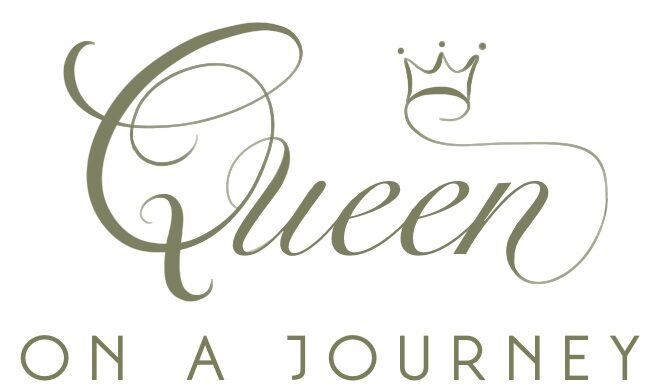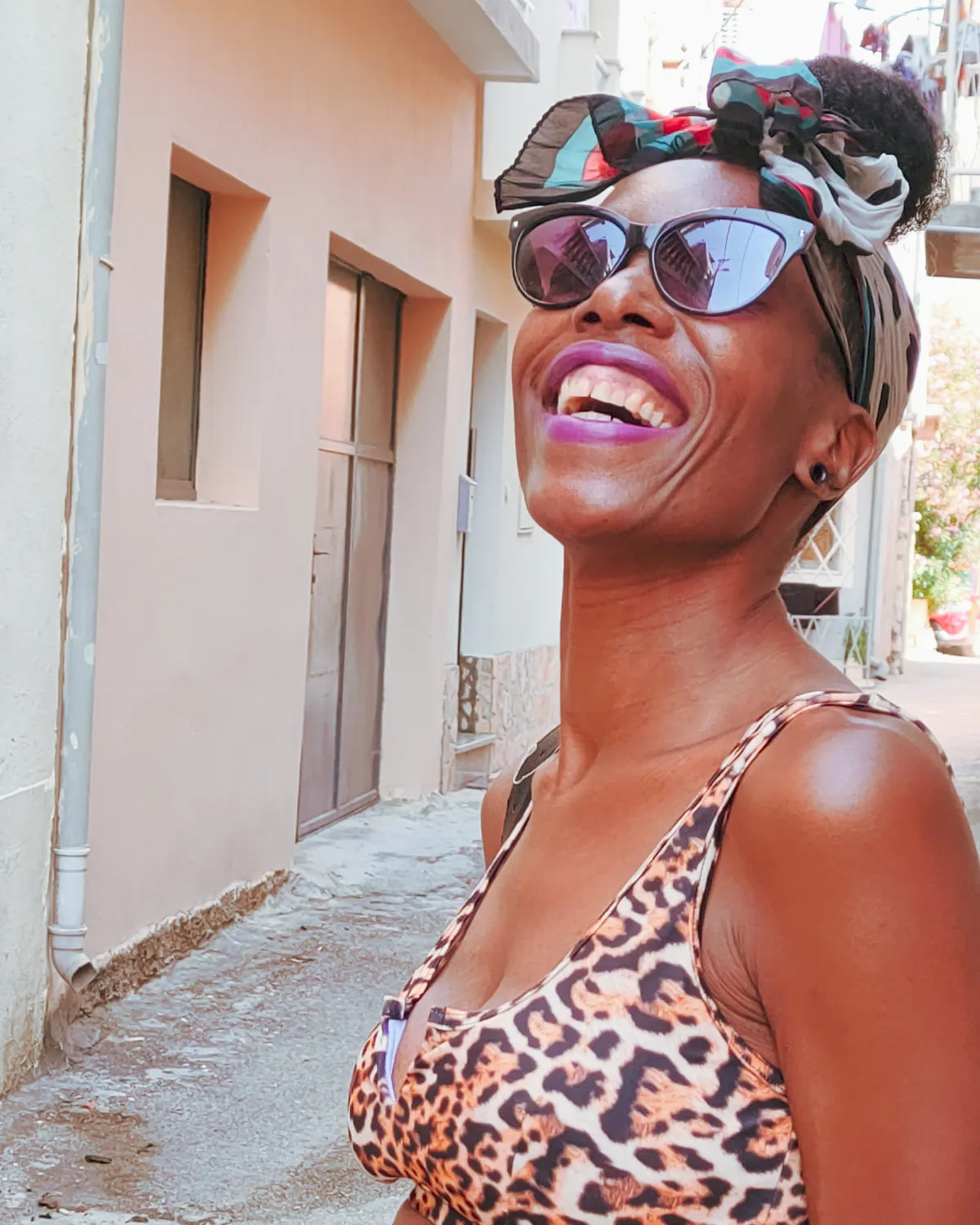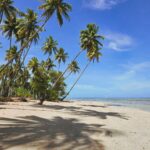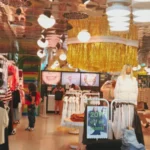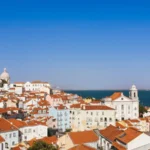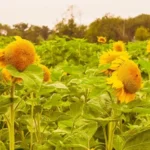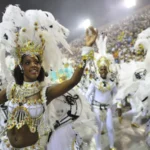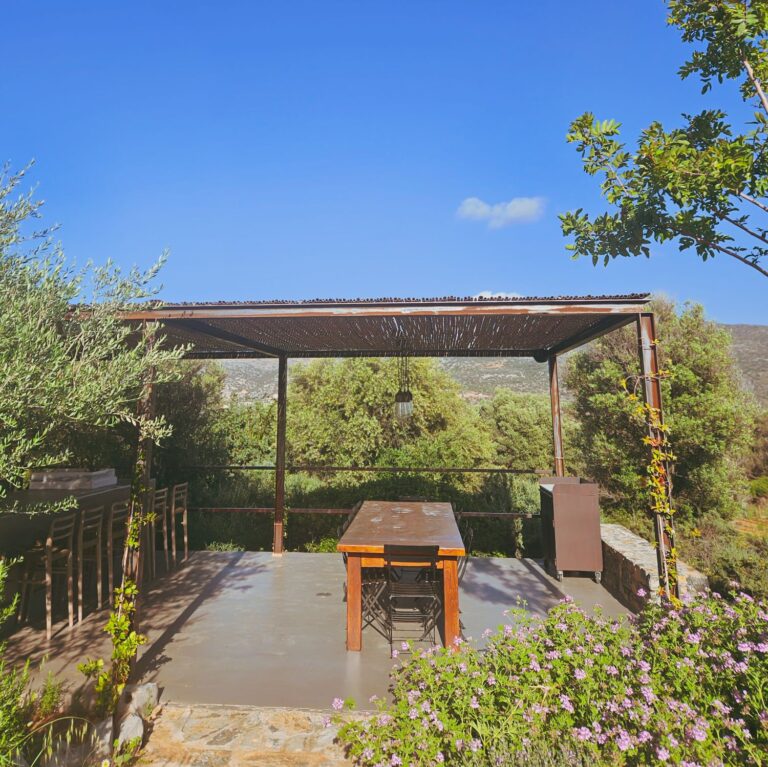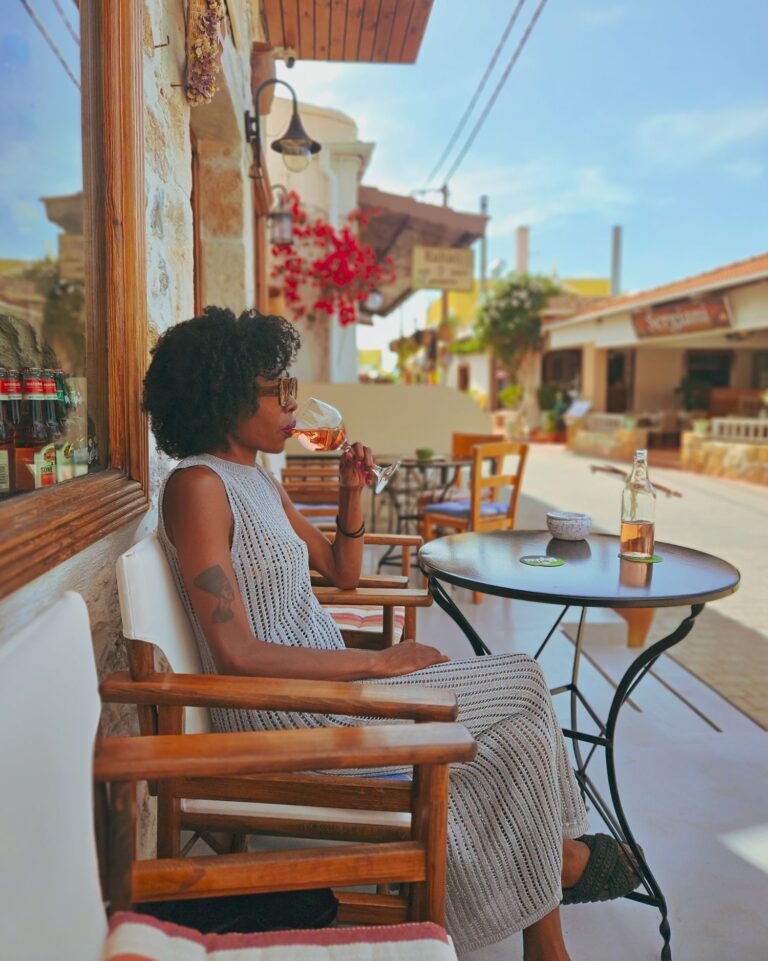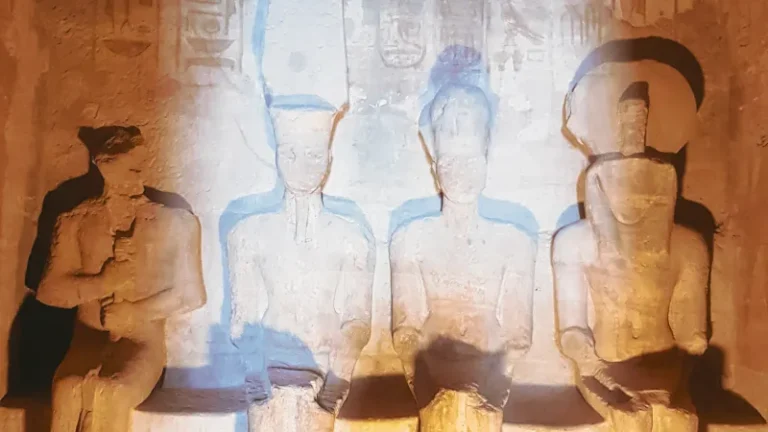Affiliate Disclaimer: This page contains affiliate links and will deliver a small commission (at no extra cost to yourself) if you purchase through the links presented. Queen On A Journey only recommends products and services she genuinely supports and utilises for her travels.
People were surprised upon hearing Albania would be my next trip. Most said it’s not somewhere they thought of going. I hadn’t either until I met someone on my travels who showed me their Albania holiday footage. I then immediately put it on my travel bucket list.
Like Croatia and Montenegro some years back, Albania is fast becoming a tourist hotspot. Having seen how things developed there, I wanted to get to Albania quickly before the influx of Brits abroad and increased prices.
For 45 years, Albanians couldn’t come out of the country, and no one could go in. It was only in the 90s that Albania started to open up. Since the fall of communism in 1991, the country has been on a slow road to recovery which has seen significant improvements nationwide, making it a top tourist destination.
Is the Albanian Riviera worth visiting?
In short, yes – especially if you want a reasonably priced quick getaway that isn’t as touristy as its neighbouring Greek Island, Corfu.
It was a short trip, but I loved it. The country has made an incredible recovery from its days under communist rule, and further insight into its history and struggle made me love the people and the place even more. The country is beautiful, and so are the people, making it well worth a visit.
The Albanian Riviera
The Albanian Riviera is a stretch of coastline, in southern Albania, along the Ionian Sea. This area is known for its stunning beaches, turquoise waters, and dramatic mountain landscapes.
As this was a beach break, this was where I headed.
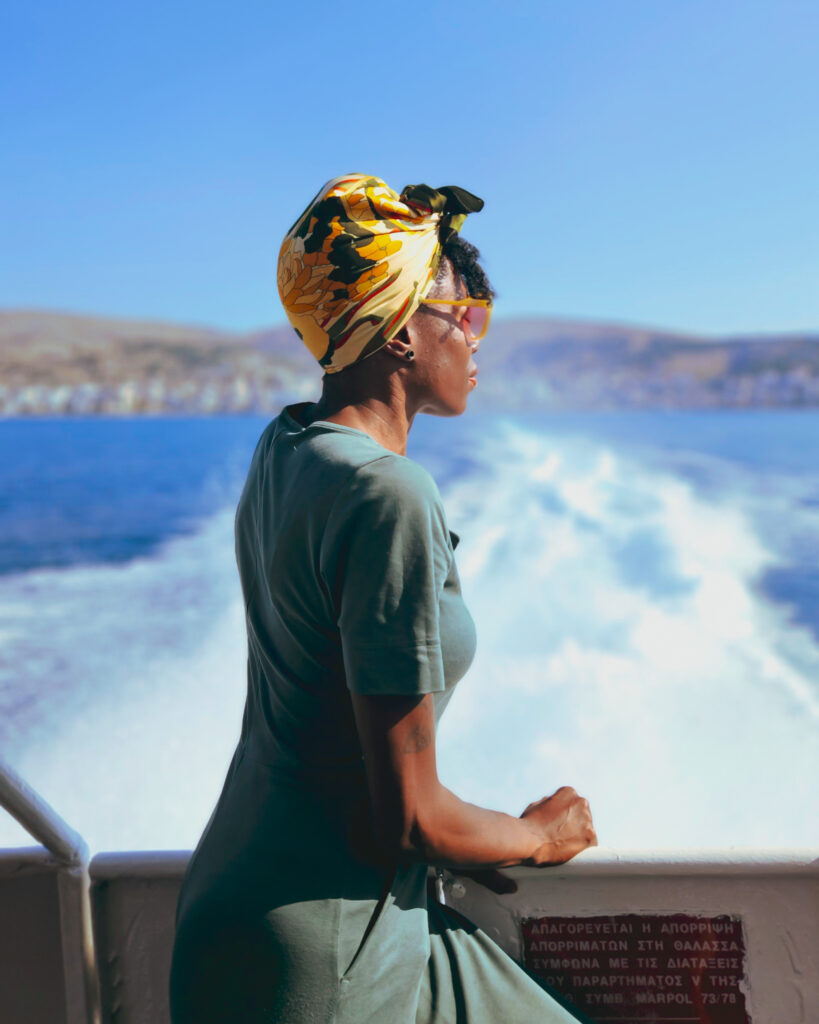
Getting there
Albania’s main international airport is in the country’s capital, Tirana.
Visiting Tirana can give insight into Albania’s communist history by visiting famous landmarks and museums.
But if your main reason for visiting is for the stunning coastline of beaches on the Albanian Riviera, which runs from Vlore to Ksamil, then you’re best off taking the ferry from Corfu to Sarandë.
Sarandë is the unofficial capital of the Albanian Riviera and a good base for exploring the area, but it takes around 3.5 – 4 hours by car or five hours by bus to reach here from Tirana.
As flight times are roughly the same to Corfu as to Tirana (just over three hours from the UK), flying to Corfu and getting the ferry to Sarandë was a quicker and cheaper option.
Buses run every half hour from Corfu airport to the port, or you can take a taxi.
The ferry only takes 30 mins to reach Albania and is €30 one way in peak season. There is a regular service, but best to book online in advance during peak season. It’s also cheaper. I booked through Finikas Lines.
Corfu is one hour ahead of Albania, so plan accordingly.
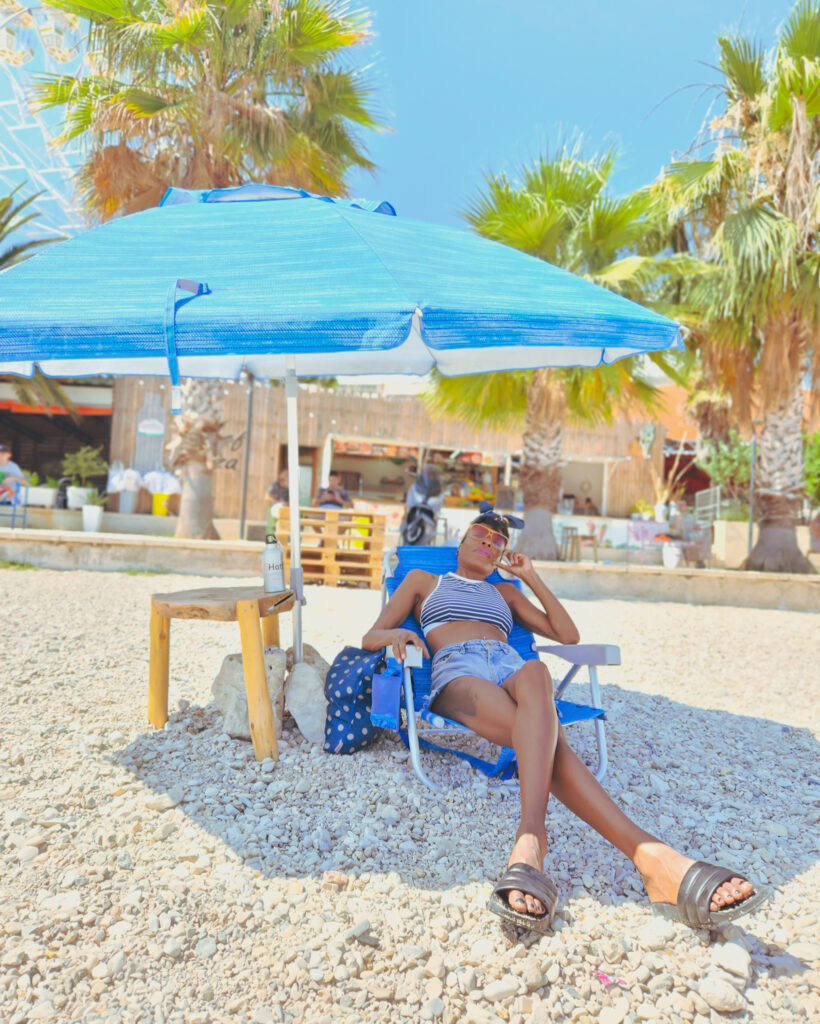
Saranda
Saranda is an ancient port and the main city in the Albanian Riviera. It’s home to several public and private pebble beaches, but the best sandy ones are outside Saranda. That said, I enjoyed the local feel of this city. It’s less commercial than Ksamil, and many tourists are domestic.
Saranda is easy to get around on foot, with many sights, shops, hotels and restaurants within proximity. The town and the surrounding area have numerous ancient ruins of historical significance. One such place of interest is Lerkusi Castle, from where you can get a great view over Saranda.
The Boulevard of Saranda is a scenic promenade that runs along the coast of the city, lined with pine trees, palm trees, cafes and traditional shops. It offers admiral views of the Ionian Sea and is a popular spot for locals and tourists to take a stroll, relax and enjoy the Mediterranean atmosphere.
Saranda is pretty quiet during the day, but the boulevard, which stretches for over 1 kilometre around the entire bay, comes to life at night.
Accommodation
There are numerous accommodation options at varying standards and pricing. I stayed at Hotel Royal Saranda. It’s a 3* accommodation with a 5* heart. The owner, Jimmy, displays warmth and authentic Albanian hospitality. Its location is fantastic, by the port and an outlook over the sea. I can’t recommend it highly enough.
Things to do
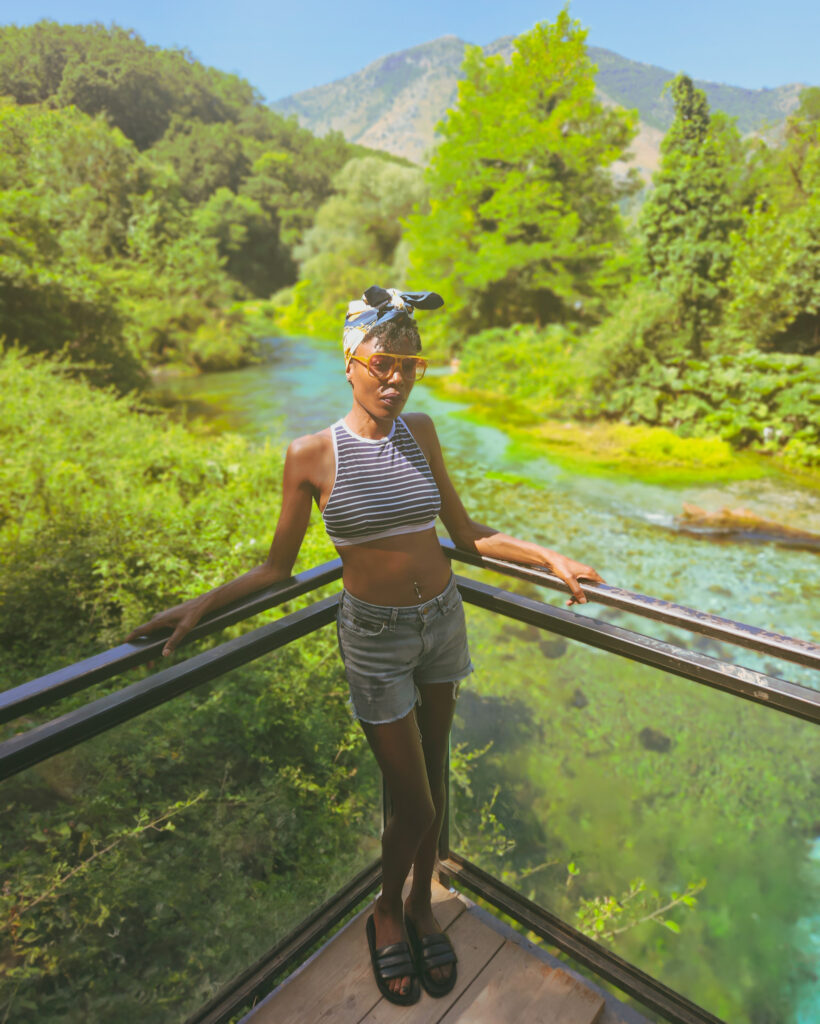
Blue Eye
The Blue Eye is a beautiful serene underwater natural spring and one of Albania’s top tourist attractions.
The outer part (the iris) is a striking bright blue, and at the centre (the pupil) is a dark underwater cave that pumps fresh water to the surface.
How deep it goes is not known, but 50m is the maximum measured. The water is freezing and remains at around 10° year round.
Signs prohibit swimming, but that doesn’t stop people from diving in from the viewing platform. The water feels good on the skin, but even on a hot day at 35°C, it won’t be long before your feet feel like ice blocks. Wear some form of footwear if you do go in, as it’s rocky.
To reach the Blue Eye, you can take a bus from Saranda to Gjirokaster and ask the driver to stop at the Blue Eye. The bus route doesn’t go directly past the entrance, so once you get off, it’s around a 2-3 kilometre walk to the eye itself.
Alternatively, a taxi will cost 4000 – 5000 LEK for a return trip. The driver will wait for you – about two hours should be sufficient.
I saw another solo traveller waiting for a bus, so we shared a taxi.
The Blue Eye has a 50LEK entry fee.
Visit Gjirokastra
A day trip to the stone city of Gjirokastra is easily done from Saranda. However, I would suggest staying overnight. More info here.
Beaches
Some of the best beaches in Albania are along the Albanian Riviera. The mountain landscapes are dramatic, and the water of the Ionian Sea a bright turquoise blue, but the best of them aren’t always easy to get to.
Though Ksamil is hugely popular among tourists for its selection of beautiful sandy beaches, as much as I liked visiting, it is very touristic. The beaches are packed with umbrellas, crowded (it was peak season, though), and prices for sunbeds are higher.
If you’re looking for quieter beaches, you’re more likely to find them between Saranda and Ksamil. One example is Shpella e Pellumbave, about a 15-minute drive from Saranda. Buses from Saranda to Ksamil run every 30 minutes and cost 150LEK.
Shpella e Pellumbave was my favourite beach, and so it should be as I had to cling on for dear life to get there as my legs turned to jelly when looking down.
It’s maybe one for the adventurous as you need to go down from an old stone stairway.
It’s a mission (but not impossible😉), and what you see here is the more straightforward part of the downward journey, but it’s worth it.
Shpella e Pellumbave is a more spacious, sandier and less busy beach than nearby Mirror Beach and those in Ksamil – not surprising given the effort it takes to get to.
I treated myself to a cocktail for making it, and it was only 10.30 am, but remembering I had to make my way back up made me limit my alcohol intake.
However, the beach is stunning and has a nice mixture of locals and tourists, and beach beds are cheaper. There’s also a great beach bar serving fantastic cocktails, but bear in mind the journey back!
Mirror Beach
Mirror Beach is located outside of Saranda and before Ksamil. It’s a beautiful beach with stunning blue water, but though not quite as busy as Ksamil, it’s a small beach, so can still get busy pretty quickly.
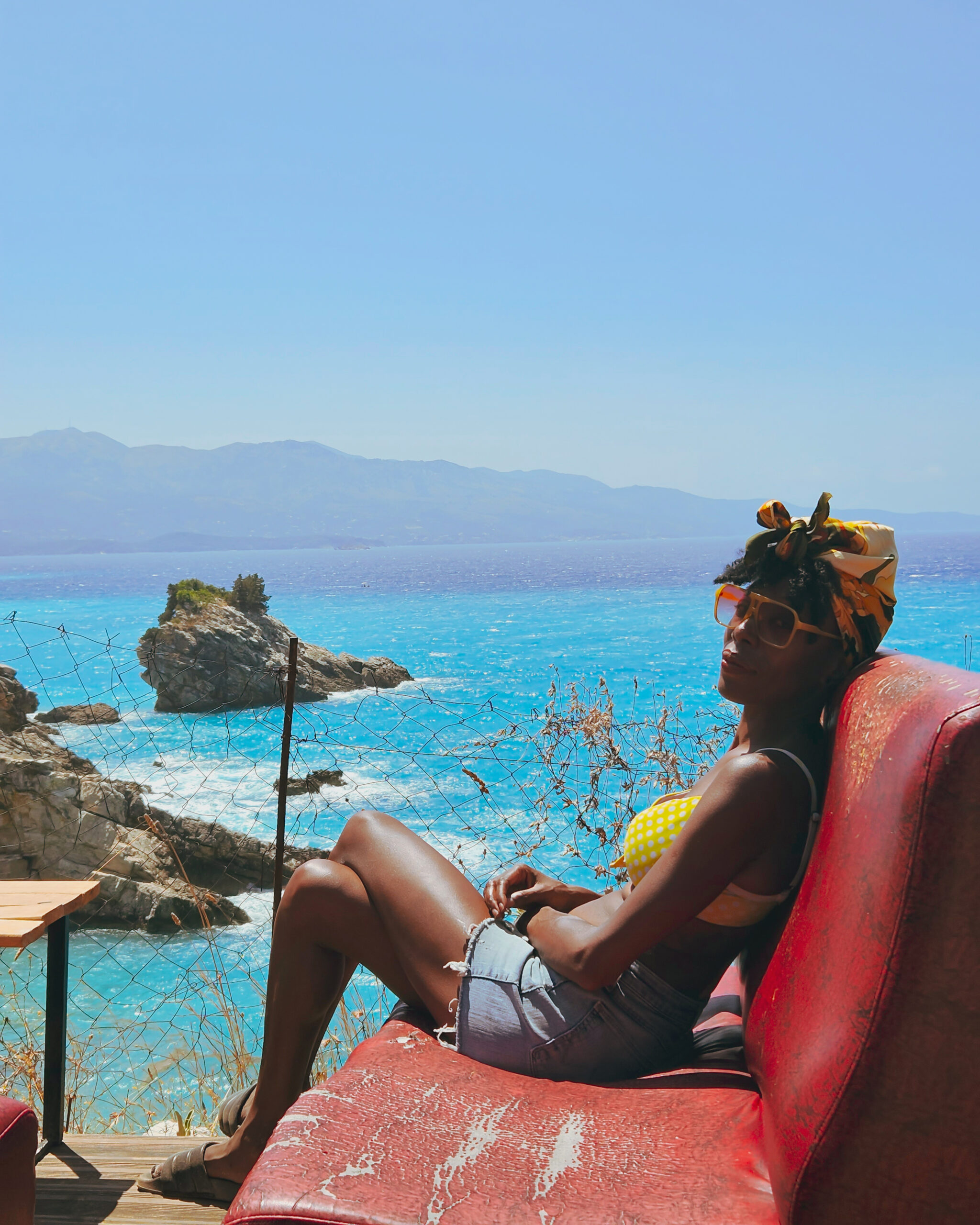
Brilant Bay
A lesser known beach, but I couldn’t get right down to it on the day I visited as the water was rough. However, I sat from a viewing platform admiring its beauty and the views.
Beaches in Ksamil
Ksamil is known for its sandy beaches. However, did you know that they were once stone beaches, and most of the sand beaches in Ksamil are man-made?
From the stretch of various beaches, you’ll see the Ksamil islands, which consist of four rocky uninhabited islets, two of which are within swimming distance, or you can hire a pedalo – while the other two can only be reached by boat as they are further away.
If I’m honest, I’m not a huge fan of Ksamil. The beaches are packed with umbrellas, very crowded and loud. If that’s your thing, then you’ll love it. It’s more of a beach club vibe and can be pretentious in parts, but you can catch quiet moments on the beach in the morning as everyone who partied the night away is in bed.
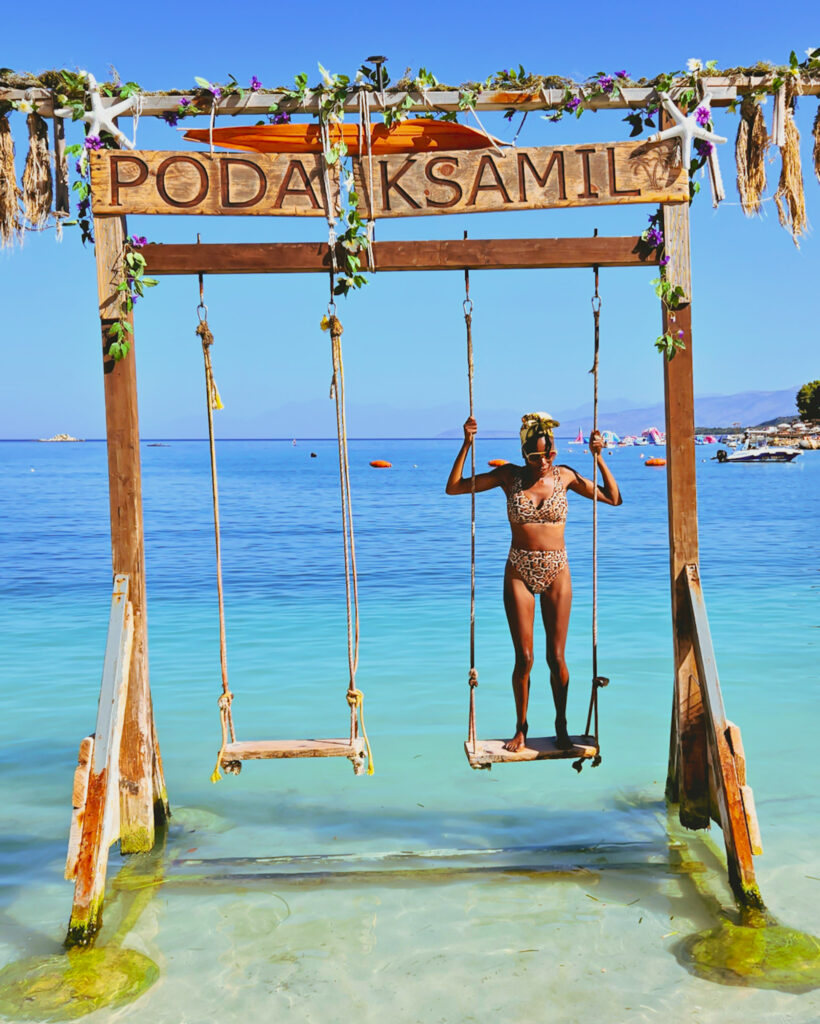
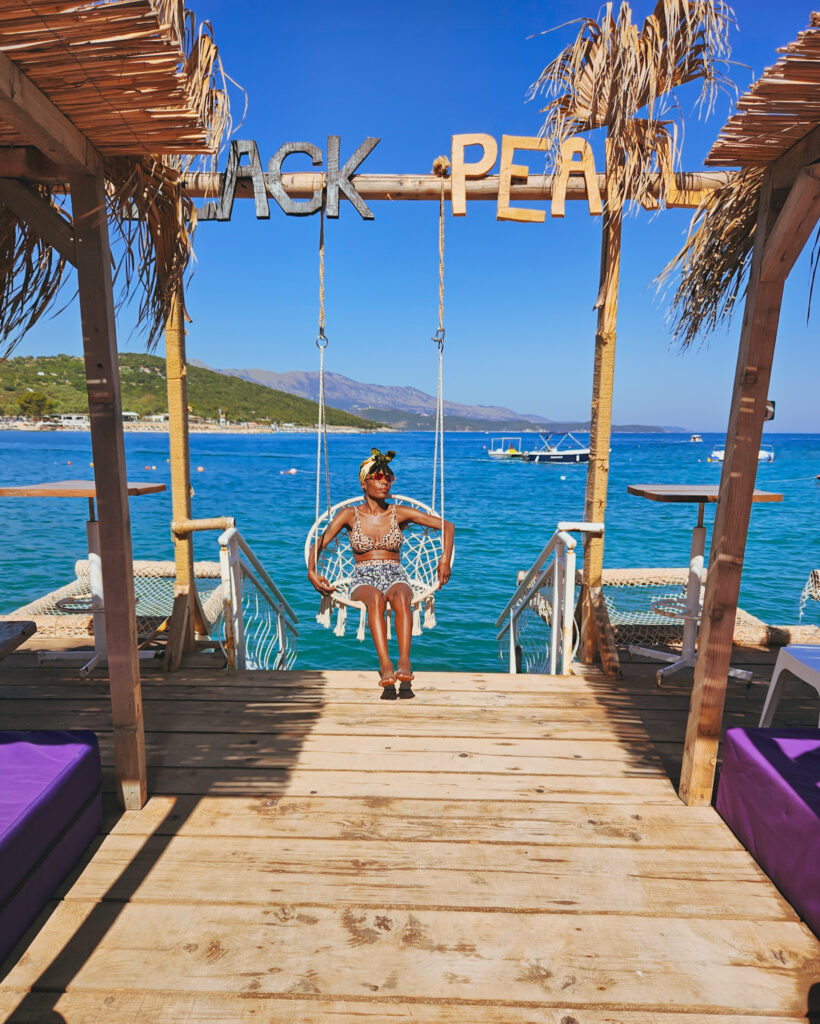
If you like to be in the mix of the action then King Hotel Poda is a good beach choice in Ksamil. It has a decent beach bar and restaurant and great views from the terrace for people watching. Like all beaches in Ksamil, it gets very busy during the peak season. If you want a quiet area you are best off looking for accommodation a little further out from this main stretch of beach.
If you continue to walk along the coast in Ksamil, there are numerous stretches of beach – Black Pearl and Bora Bora are also popular.
Mussel Tour
This mussel sailing tour with food and drink tasting is a must while in Saranda or Ksamil.
The journey will start on a traditional boat at Butrint. On this tour, you will sail to mussel beds, built since the times of communism in 1960. The tour guide will explain the process of mussel cultivation, and fresh mussels are taken directly from the farm before heading to a family-run restaurant where four delicious mussel dishes are prepared and accompanied by local white wine.
The Mussel tour is a unique local experience where you will meet the Queen, the famous blue mussel of Butrint Lake. Butrint is a UNESCO heritage site known for its ancient ruins and beautiful scenery.
I loved this tour and the mussels were delicious.
This tour is highly recommended. I booked via Viator.
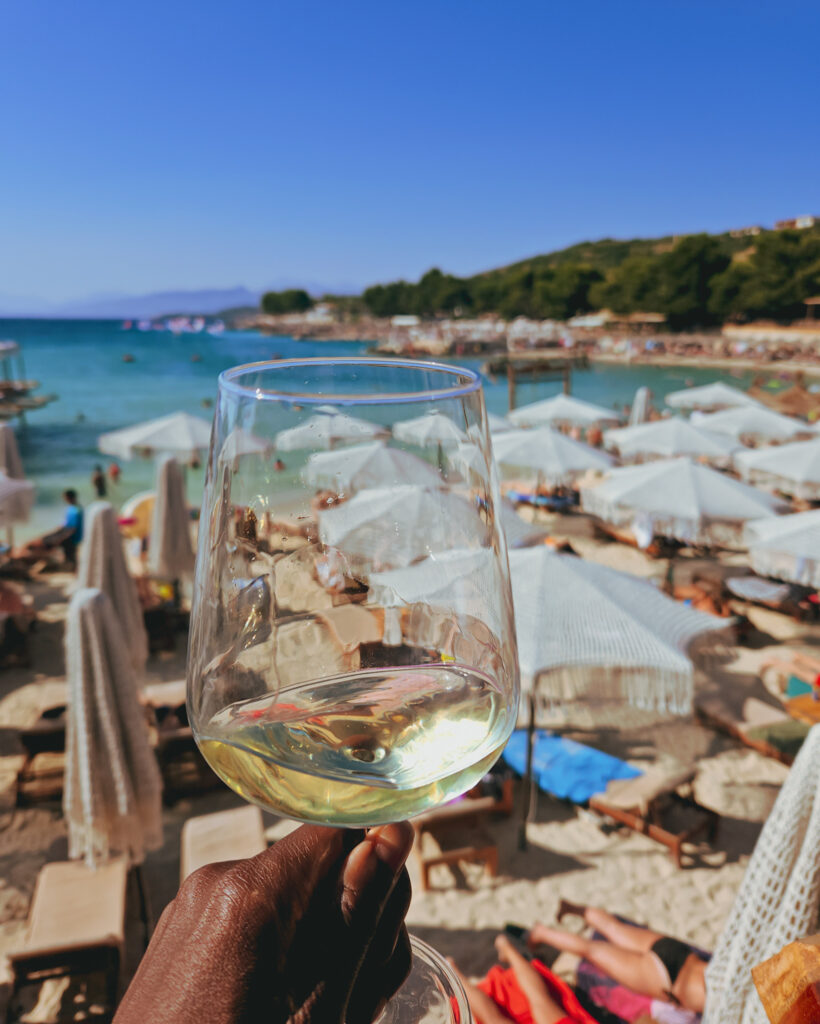
Local Food and Wine
Albania has delicious wine, and the food is tasty too. Being based on the coast means there’s seafood aplenty, so a pescetarian’s dream.
Albanian food is representative of Mediterranean cuisine and is primarily based on healthy ingredients such as vegetables, fruit, fish, and seafood. Modern dishes have their roots in the Ottoman Empire, and Turkish influences are noticeable. Other modern culinary influences include Italian and Greek.
Some local foods include:
Byrek – a breakfast staple but a snack eaten at any time. Byrek is layers of wheat-based phyllo pastry filled with vegetables, meat or cheese.
The most common Albanian byrek is filled with cheese or tomato and sometimes spinach or meat. It is cooked in a large pan in the oven and then cut into squares, triangles or rectangles for serving. Because byrek is such a popular food in Albania, you can find it in any bakery across the country and at most restaurants.
Speca te mbushura – stuffed bell peppers is a popular local dish served in all regions of Albania. It consists of bell peppers stuffed with rice. The stuffed peppers are baked and served hot.
Seafood – Located right on the Sea, Albania is famous for its seafood. In the restaurants located along the coast and in the main towns through the Riviera, you can eat fresh seafood for reasonable prices while admiring the fabulous sea panoramas from the restaurant terraces.
Zupa – Zupa is a popular dessert in Albanian cuisine consisting of layers of sponge cake with pastry cream and nuts.
Wine – Albania may not be as well known as other countries for its wine, but it has one of the oldest wine-making traditions in Europe, dating back to the Bronze Age. During the communist dictatorship, there were several operating wineries and grape production sites handled only by the regime (not private owners) – but just like the country itself, its wine is up and coming and tastes delicious.
Raki – this is a traditional Albanian drink and its strongest. It can be made with almost every fruit and is drunk before or after meals and sometimes even in the morning while having a coffee. It’s pretty strong though so you wouldnt catch me drinking it at breakfast.
Restaurants in Saranda
Fresco Fish – fresh seafood and a great view from the terrace.
Kristiano Restaurant & Bar – delicious Albanian wine with the perfect view of an endless sea.
Bar & Restaurant Limani – a popular restaurant and bar on the pier.
Restaurant Te Bequa is a must for delicious local food and wine. This restaurant has delectable traditional home-cooked food and a lovely authentic atmosphere.
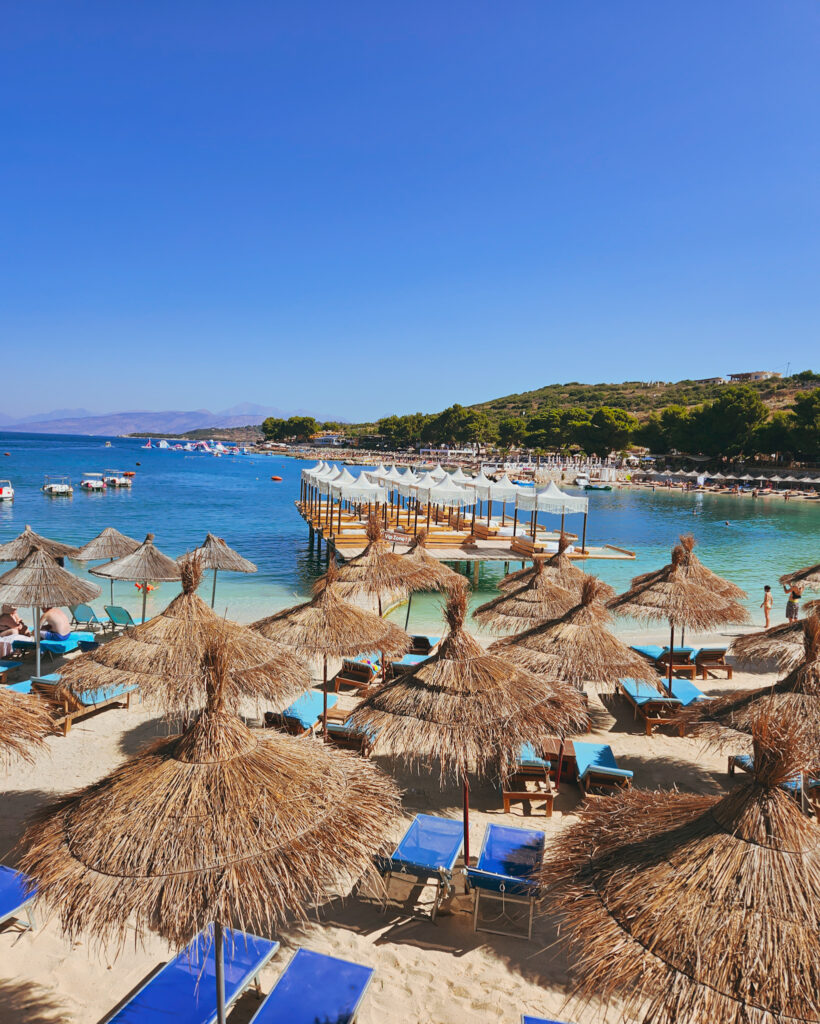
Top Tips
Currency
LEK is the official currency of Albania. The LEK is a closed currency and can only be exchanged upon arrival.
Take Euro
Euro is the best currency to take with you. You can easily exchange euros for LEK in Albania. However, most hotels accept and quote prices in euro, and some shops, restaurants and taxi drivers will also accept euro, but you’ll get better prices in LEK.
ATM withdrawals
As Albania is not currently part of EU, ATM withdrawals can be costly.
You may be charged an extra €6 or 700LEK on top of any charges by your bank for cash withdrawals at ATMs. So, it’s cheaper to exchange cash than withdraw from an ATM.
Cash
Always have cash to hand. Cards are widely accepted in commercial areas such as Ksamil, but many smaller hotels, restaurants, shops and beach bars only take cash.
Mobile
Again, as Albania is not currently part of the EU, it was not part of my mobile provider’s free EU roaming.
Language
Download Albanian on Google Translate. Although most people speak English, some don’t so a translation app will be useful. In any event, the effort of even a “thank you” in their native tongue is greatly appreciated.
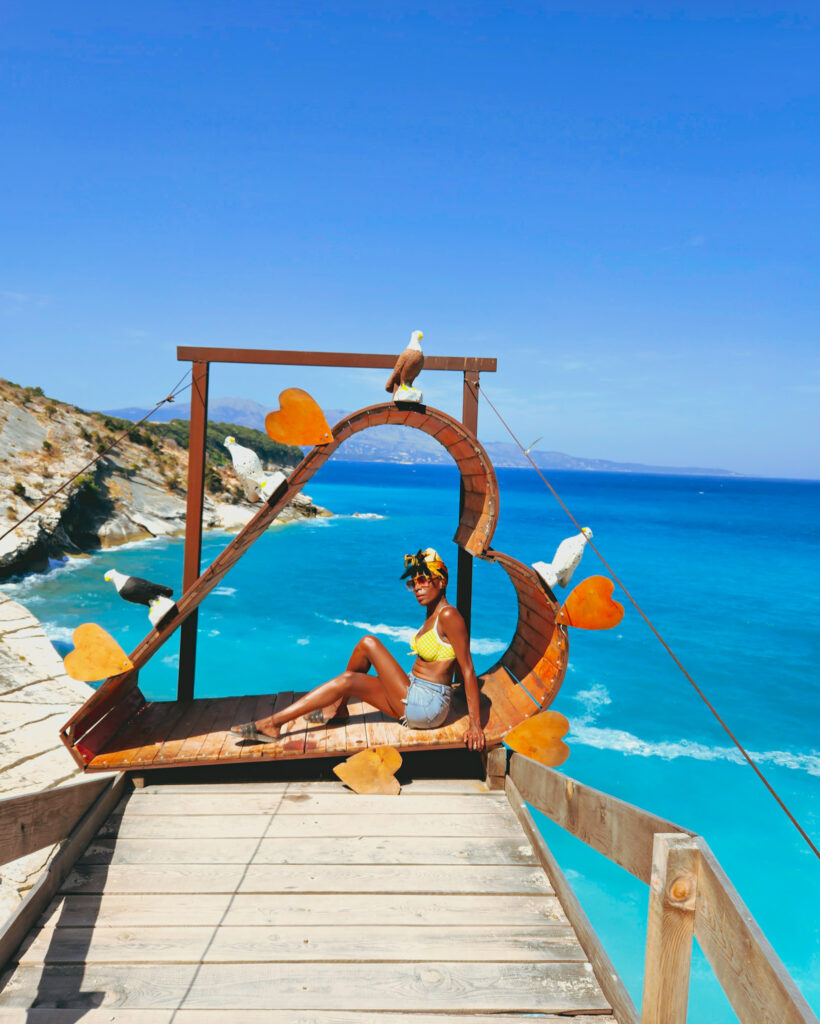
Conclusion
I loved Albania – more than I expected. It exceeded any expectations. The country and people are beautiful, and I want to return. However, this destination is up and coming, and tourists are expected to triple next year hence my wanting to get in there now. That said, tourism is good for them, especially given their history and every Albanian I spoke to was proud of their country and wanted people to return. For purely selfish reasons I’m a bit gutted as I know this means overcrowding and prices skyrocketing.
